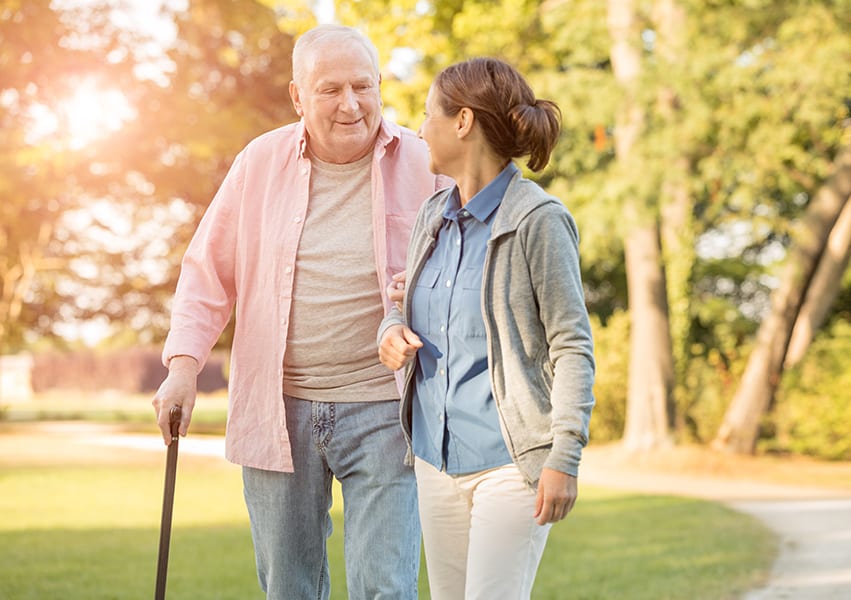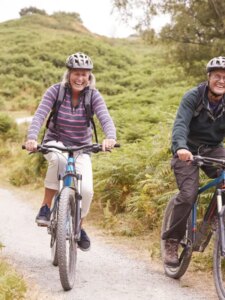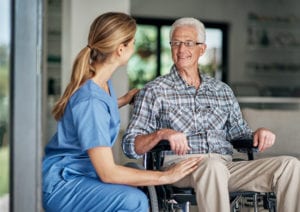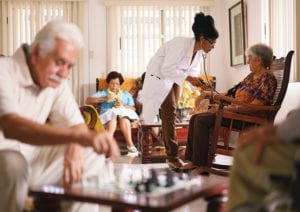It can’t happen to me.
It’s just part of getting old. There’s nothing I can do.
The reality is a quarter of Americans 65 and older experience a fall each year.
According to the Centers for Disease Control, falls are the leading cause of fatal injury and trauma-related hospital admissions for older adults.
- Falls are responsible for 27,000 accidental deaths per year, 800,000 hospitalizations and 2.8 million emergency room visits among older adults.
- Fall injuries affecting older adults resulted in $34 billion in healthcare costs in 2013. That number is projected to reach $67 billion by 2020.
The good news is that, in spite of the risk, falling is not just a “normal” part of aging.
To educate more people about fall prevention, the National Council on Aging recognizes Falls Prevention Awareness Day on September 22, the first day of fall.
Here are 7 simple habits that can help prevent falls in the elderly.
How To Prevent Falls in Elderly People
Step 1: Get Your Exercise
While many people limit their physical activity due to a fear of falling, you should be doing the exact opposite. Balancing exercises for seniors are an important part of mitigating fall risk.
- Some people do develop balance problems and gait abnormalities as they get older, along with a loss of coordination and flexibility.
- Lack of physical activity, and not just age alone, is a major contributor to these problems.
- Regular exercise at any age can actually improve your strength and range of motion, making it easier to get around safely and independently.
- Another common misperception is that muscle strength and flexibility are lost forever as we age. The truth is that it’s never too late to start an exercise program to restore your strength, flexibility and balance.
If you’re new to exercise, check with your doctor and work with a qualified therapist or trainer to get started safely.
Step 2: Check Your Vision
Less light reaches the retina as we age, which leads to some loss of vision. Sometimes it gets harder to see contrasting edges, tripping hazards and other obstacles that interfere with safe walking.
- Have your vision checked at least once a year.
- Keep your eyeglass prescription up-to-date.
- If you have low vision consider assistive devices to reduce the risk of tripping.
- Be careful if your lenses change from light to dark. They can be risky when going from bright sunlight outdoors to indoor lighting.
- If you use bifocals, consider taking them off when going up and down the stairs. They can distort your vision and increase the risk of tripping.
Step 3: Manage Your Medications
If you take any type of medication — prescription or over-the-counter — be aware of any side effects or interactions that may affect walking and increase the risk of a fall.
- Some medications may cause dizziness, dehydration or adverse interactions with other medications or foods.
- Sleep aids and other medications that cause drowsiness may make you dizzy and affect your balance.
- Are you having trouble keeping track of multiple medications? Review them regularly with your doctor or pharmacist to make sure you’re only taking the medicines you need and that you’re getting the correct dosage.
By keeping track of your medications, you may experience fewer adverse reactions that could include a higher risk of falling.
Step 4: Manage Chronic Conditions
Some chronic conditions, such as diabetes or arthritis, may result in a loss of function, which can be complicated by inactivity, depression, pain or interactions between multiple medications.
Sometimes these complications may increase your risk of a fall.
Another condition that affects your risk of falling is osteoporosis, which affects bone density and strength. If you have osteoporosis, or you’re at risk, here are some ways to promote bone health and reduce your risk of a fracture:
- Get plenty of Vitamin D and calcium. These crucial nutrients are associated with fewer falls and broken bones.
- Keep up with your exercise. In addition to building strength, flexibility and balance, regular physical activity is good for your bones.
- Don’t smoke. If you currently smoke, quit.
- Limit your alcohol intake.
- Get a regular osteoporosis screening if you’re at risk. Early diagnosis can help with effective treatment.
Step 5: Bring Safety Home
Some people become fearful of going shopping, out to eat, or other public places because they’re concerned about tripping and falling.
They think if they just stay home they’ll be safer. Actually, over half of all falls happen in the home.
A good safety assessment and a few simple home improvements can help.
- Make sure your home has plenty of lighting, especially on the stairs and when getting up in the middle of the night.
- All stairs should have two secure handrails, one on each side.
- Install grab bars in the bathroom near tubs, showers and toilets. Consider using a shower chair or handheld shower for added safety.
- Have non-slip paint or treatments applied to steps and hard floors.
- Fix the simple tripping hazards. Keep walkways free of clutter and make sure rugs are secure so no one will trip on them.
Step 6: Consider Mobility Aids
Another common misperception is that mobility aids — such as a cane or walker — make you more dependent.
- These important devices can actually improve your independence and safety in getting around.
- Have your physical therapist help you choose the right device and make sure it fits your size and mobility needs.
- If you’re using mobility aids for the first time, your therapist should also take the time to help you use them correctly.
Step 7: Speak Up
Some people are embarrassed to talk about their concerns about falling. But safety is a team effort.
Talk to your doctors and your closest family members about how they can help you reduce your risk. If you have an older relative and you’re worried about their risk of a fall, reach out and listen to them.
- Are they concerned about falling?
- Have they experienced dizziness, balance problems, or other symptoms that could put them at risk?
- Is it getting harder to perform routine daily tasks independently?
- Are they suffering from hearing or vision loss?
- What medications are they taking? Are they having trouble remembering to take them? Are they having any side effects?
- Go with them to the doctor and ask for a fall risk assessment.
- If possible, offer to help correct any safety hazards in the home.
Are you concerned about how to prevent falls for yourself or a loved one?
Contact us at Culpepper Place of Olive Branch. We can answer your questions about topics affecting older adults and provide helpful information on whether assisted living would provide the safe and comfortable home environment you’re looking for.






